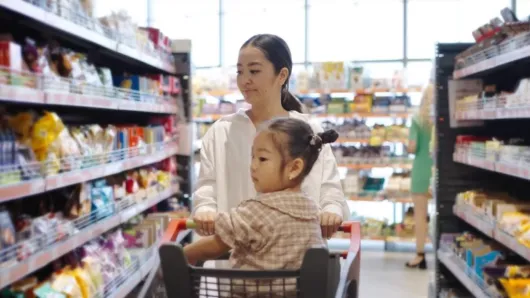At Sonoco, our commitment to Better Packaging, Better Life™ goes beyond the products and materials we use. We also consider how we manage waste during our production and how general operations may impact the environment too. This goes for the lights in our buildings and for the systems used to heat and cool us and our manufacturing processes. We strive to be as efficient as possible with the resources that we have so that we can protect our planet and continue to deliver better packaging into the future.
Let's unpack our approach to renewable energy.
In 2021, Sonoco announced new 2030 greenhouse gas emission reduction targets, which were validated by the Science-based Targets initiative organization. We spent over a year reviewing previous metrics, trying
to think of how we can best face the growing demands of climate change. So we agreed to challenging reductions in our combined scope one and scope two emissions, committing to a 25% reduction by 2030 from a 2020 baseline.
The way we work to develop the roadmap for reducing greenhouse gas emissions is to identify opportunities that will:
- Give us the greatest emission reductions.
- Save operational expenses.
For instance, we may focus on reducing electrical use at a site whose electrical grid relies on coal power plants versus one whose electrical grid is supplied mainly by renewable energy, such as hydropower.
The other factor in selecting energy efficiency projects is the cost of electricity, and one of the simplest way to cut expenses and further meet our targets is to swap lighting for LEDs, which we've done at various locations across the enterprise too. Things like lighting, compressed air optimization, and investing in chilled water systems, reduce our electrical use and directly reduce our scope two emissions.
For scope one emissions, we have several projects. One, is to capture the biogas emitted from our plant's wastewater treatment system to create renewable natural gas, and our external partners have helped us with that in Hartsville, South Carolina. Other scope one emissions reductions projects include installation of more energy efficient boilers like in our cheerier, Italy and Richmond, Virginia plants. We are also looking into switching fuels from coal to natural gas in our Subang Indonesia plant.
To reduce our Scope two emissions, we have implemented LED lighting, compressed air optimization, and chilled water optimization projects, and we will identify more of these type projects in the future. We are also targeting on onsite solar projects that will provide well over 10 million kilowatt hours of renewable energy per year to our plants in Jamesburg, New Jersey, Hartsville, South Carolina, and Waco, Texas. We target areas across the Americas, Europe, and Asia where we can use corporate capital grants or other funding opportunities to lower our expenses as we reduce our emissions.
Partnerships in top down support have been vital. We have an oversight committee meeting every quarter to make sure our projects align with our commitments. We are investing in technology to give us better, more up-to-date insights on our energy efforts every quarter to adjust in real time as necessary. We're improving the metering in our plants and better educating our plant managers.
It is a team effort, not a one person job.
It takes us together working to identify potential energy and cost saving projects, and it doesn't have to be huge. Take for example, if you replace a hundred watt light bulb with a 13 watt light bulb. After a year, you have saved over 180,000 watts. Simple changes create impact and having the right leadership, partnerships, and teams give you the best outcomes.
So now that we've unpacked it, you can see our road to better packaging is complex. It's going to involve all types of considerations for renewable energy and support from everyone all over the globe with the right leadership to drive us forward.
You can learn more about our energy commitment at sonoco.com, and download a copy of our corporate sustainability report.
And that's this episode of sustainability unpacked.


